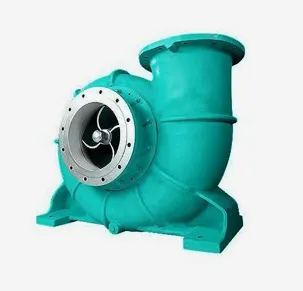Serbian
- Afrikaans
- Albanian
- Amharic
- Arabic
- Armenian
- Azerbaijani
- Basque
- Belarusian
- Bengali
- Bosnian
- Bulgarian
- Catalan
- Cebuano
- Corsican
- Croatian
- Czech
- Danish
- Dutch
- English
- Esperanto
- Estonian
- Finnish
- French
- Frisian
- Galician
- Georgian
- German
- Greek
- Gujarati
- Haitian Creole
- hausa
- hawaiian
- Hebrew
- Hindi
- Miao
- Hungarian
- Icelandic
- igbo
- Indonesian
- irish
- Italian
- Japanese
- Javanese
- Kannada
- kazakh
- Khmer
- Rwandese
- Korean
- Kurdish
- Kyrgyz
- Lao
- Latin
- Latvian
- Lithuanian
- Luxembourgish
- Macedonian
- Malgashi
- Malay
- Malayalam
- Maltese
- Maori
- Marathi
- Mongolian
- Myanmar
- Nepali
- Norwegian
- Norwegian
- Occitan
- Pashto
- Persian
- Polish
- Portuguese
- Punjabi
- Romanian
- Russian
- Samoan
- Scottish Gaelic
- Serbian
- Sesotho
- Shona
- Sindhi
- Sinhala
- Slovak
- Slovenian
- Somali
- Spanish
- Sundanese
- Swahili
- Swedish
- Tagalog
- Tajik
- Tamil
- Tatar
- Telugu
- Thai
- Turkish
- Turkmen
- Ukrainian
- Urdu
- Uighur
- Uzbek
- Vietnamese
- Welsh
- Bantu
- Yiddish
- Yoruba
- Zulu
Telephone: +86 13120555503
Email: frank@cypump.com
нов . 08, 2024 23:08 Back to list
Optimizing Performance and Efficiency of Pipeline Centrifugal Pumps for Fluid Transport Systems
Understanding Pipeline Centrifugal Pumps A Comprehensive Overview
Pipeline centrifugal pumps play a critical role in various industries, transferring fluids through a pipeline system efficiently and reliably. These pumps are specifically designed to move fluids, which can range from water to more viscous liquids, across substantial distances. By converting mechanical energy from a rotating impeller into hydraulic energy, centrifugal pumps are highly effective for numerous applications, including water supply, chemical processing, and oil and gas industries.
Working Principle
At the heart of a pipeline centrifugal pump is the impeller, a rotating component that imparts velocity to the fluid. As the impeller spins, it accelerates the fluid inward toward the center, creating a low-pressure area that causes fluid to be drawn into the pump from the inlet. The increased velocity of the fluid is then transformed into pressure as it passes through the diffuser or volute casing, which slows down the flow and directs it toward the discharge pipe.
The efficiency of a centrifugal pump is influenced by several design factors, including the impeller design, casing shape, and overall pump configuration. Manufacturers often customize these components to suit specific pumping applications, taking into account factors such as fluid properties, required flow rates, and the total dynamic head (TDH) needed to move the fluid through the pipeline system.
Features and Benefits
One of the main advantages of pipeline centrifugal pumps is their ability to handle large volumes of fluid with relatively low energy consumption. They are typically more energy-efficient compared to positive displacement pumps, especially in applications requiring continuous flow. Additionally, their simple design translates into lower maintenance requirements, making them a cost-effective solution for many operations.
Centrifugal pumps also offer flexibility in installation. They can be configured in a variety of ways—such as single-stage or multi-stage pumps—to meet the specific head and flow requirements of a pipeline system. Multi-stage pumps, for instance, can achieve higher pressures by incorporating multiple impellers, making them ideal for applications involving significant vertical lift or long-distance transport.
pipeline centrifugal pump

Applications
The versatility of pipeline centrifugal pumps makes them suitable for a broad range of applications. In municipal water supplies, they help transport water from treatment plants to distribution networks. In the oil and gas industry, they are employed for the transfer of crude oil, refined products, and even chemical compounds, often over vast distances through pipelines.
In industrial settings, these pumps facilitate processes in manufacturing, cooling, and HVAC systems. Their ability to maintain consistent flow rates makes them an ideal choice for applications requiring precise control, such as in chemical reactor feed or in cooling towers where consistent fluid circulation is essential.
Challenges and Considerations
Despite their many advantages, pipeline centrifugal pumps are not without challenges. Cavitation, which occurs when vapor bubbles form and collapse within the pump, can cause significant damage if not adequately managed. Proper sizing and selection, along with ensuring that operating conditions remain within the pump's design parameters, are crucial for minimizing this risk.
Additionally, the choice of materials for the pump components is important. Depending on the fluid being pumped, corrosion resistance and wear capabilities must be considered to avoid premature failure of the pump.
Conclusion
Overall, pipeline centrifugal pumps are essential tools in numerous industries, offering efficient fluid transfer capabilities. Their design flexibility, energy efficiency, and lower maintenance needs make them a preferred choice for many applications. However, proper selection, operation, and maintenance are vital to ensure optimal performance and longevity. As technology advances, we can anticipate further enhancements in pump design and efficiency, supporting the growing demands of modern infrastructure and industrial processes.
-
Heavy-Duty Mining Sludge Pumps - Wear-Resistant Slurry Handling
NewsAug.02,2025
-
Horizontal Split Case Pump with GPT-4 Turbo | High Efficiency
NewsAug.01,2025
-
ISG Series Pipeline Pump - Chi Yuan Pumps | High Efficiency, Durable Design
NewsAug.01,2025
-
Advanced Flue Gas Desulfurization Pump with GPT-4 Turbo | Durable & Efficient
NewsJul.31,2025
-
ISG Series Vertical Pipeline Pump - Chi Yuan Pumps | Advanced Hydraulic Design&Durable Construction
NewsJul.31,2025
-
ISG Series Vertical Pipeline Pump - Chi Yuan Pumps | Energy Efficient & Low Noise
NewsJul.31,2025










